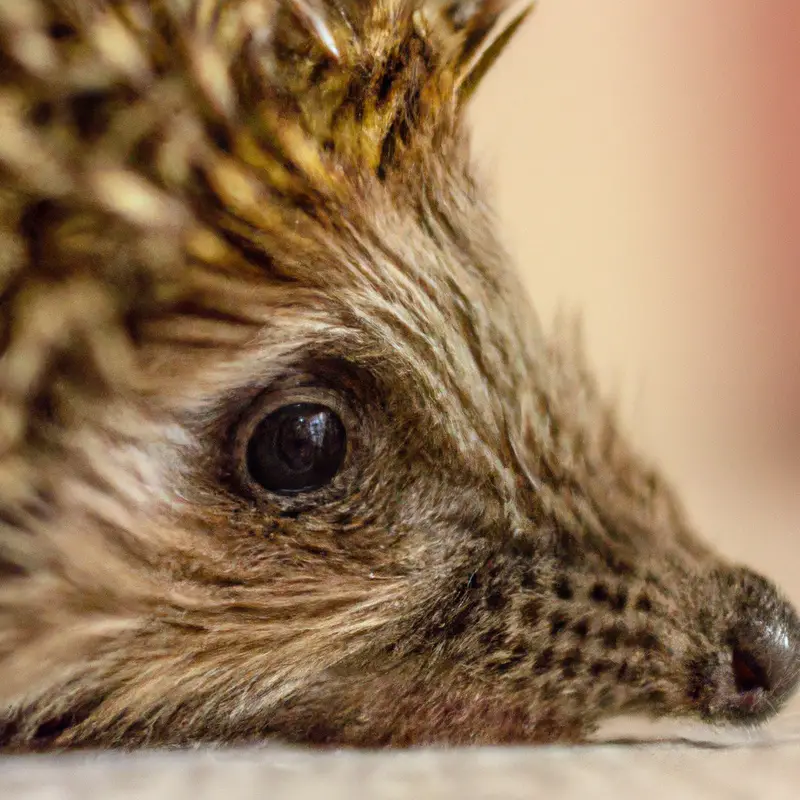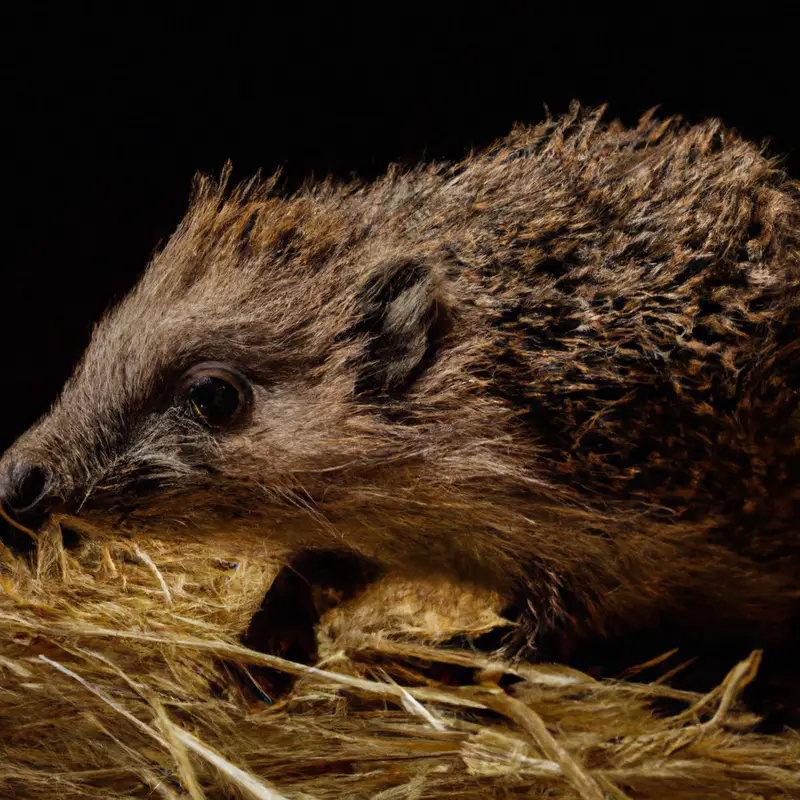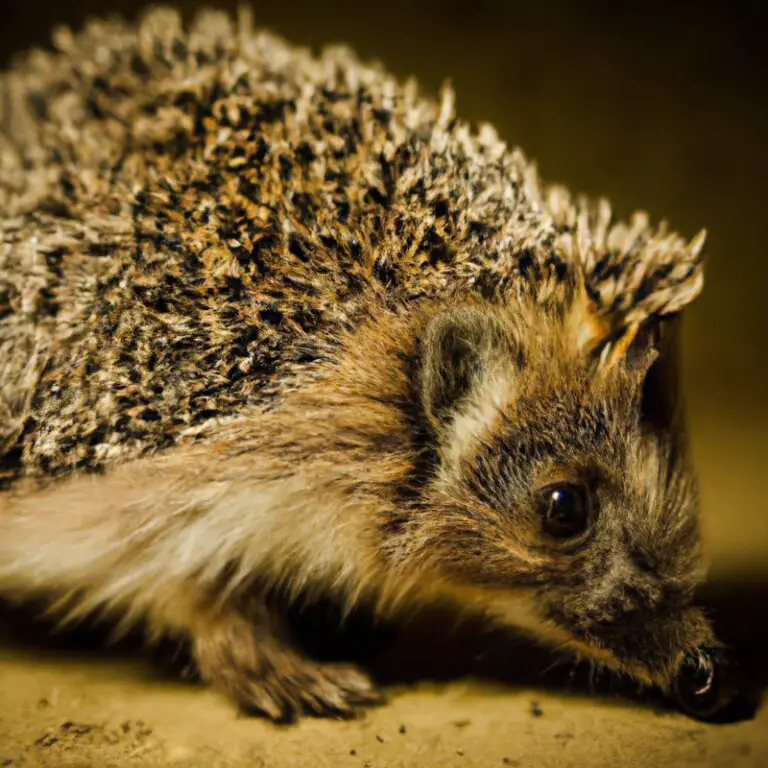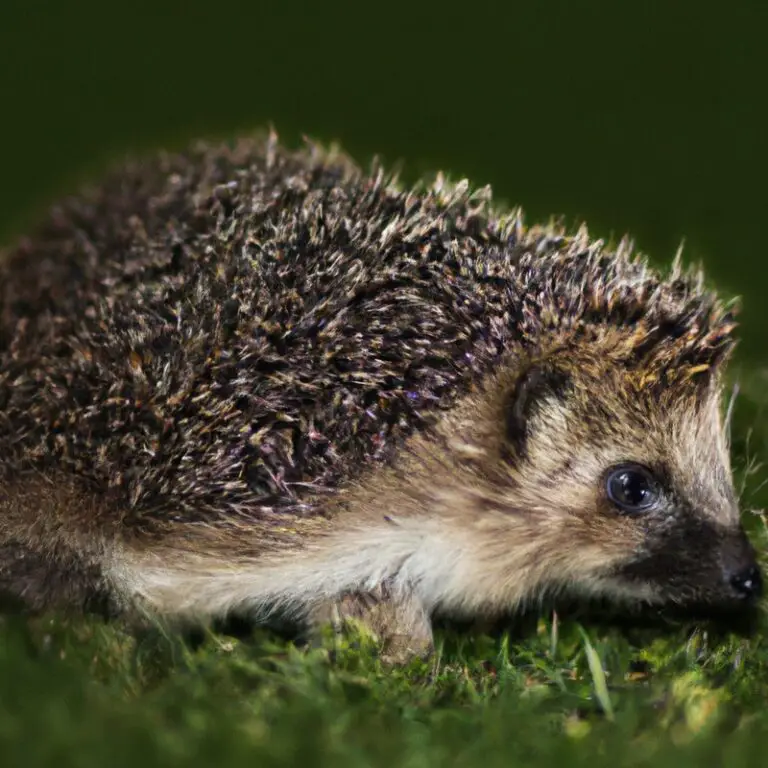How Do Hedgehogs Forage For Food In Urban Areas?
Key Takeaways:
- Hedgehogs rely on their sense of smell to locate food in urban areas.
- They primarily search for insects, slugs, and worms in gardens and green spaces.
- Hedgehogs’ ability to adapt their foraging behavior allows them to thrive in urban environments.
- Providing a hedgehog-friendly environment can help support their foraging needs in urban areas.
Do you ever wonder how hedgehogs manage to find food in the concrete jungle of urban areas?
Well, you’re in for a prickly surprise! Hedgehogs are quite resourceful when it comes to finding food in unexpected places.
In this article, we’ll delve into the world of hedgehog foraging, exploring their natural and supplementary food sources.
Not only that, but we’ll also discover how you can create a garden that attracts hedgehogs and encourages their foraging behavior.
So, get ready to discover the secrets of hedgehog survival in the city!
| Method of foraging | Advantages | Disadvantages | |
|---|---|---|---|
| 1 | Browsing through grass and bushes | – Wide range of food sources – Natural behavior | – Limited access to some food – Vulnerable to predators |
| 2 | Rooting and digging in soil | – Access to roots, insects, and worms – Exercise and stimulation | – Risk of injury from sharp objects – Disturbing the soil and plants |
| 3 | Searching through leaf litter | – Finding hidden insects and small creatures – Natural camouflage | – Difficulty in finding enough food – Competition with other animals |
| 4 | Exploring human-made structures | – Access to human leftovers – Novel food sources | – Unhealthy diet – Exposure to potential toxins |
Food sources for hedgehogs in urban areas
Hedgehogs in urban areas find food from natural sources and supplementary sources.
Natural food sources
Natural food sources for hedgehogs in urban areas include insects, worms, slugs, snails, beetles, and caterpillars. These creatures can be found in gardens, parks, and green spaces.
Hedgehogs also forage for fruits, such as berries and fallen apples.
Providing a diverse and pesticide-free environment can encourage hedgehogs to find the food they need. Creating hedgehog-friendly habitats, like log piles and wild areas, can help support their natural food sources.

Supplementary food sources
Supplementary food sources for hedgehogs can be beneficial in urban areas where natural food may be scarce. By providing dry cat or dog food, you can offer a nutritious and easily accessible option.
Avoid using foods that are high in salt or sugar, as they can be harmful to hedgehogs.
Additionally, offering shallow bowls of fresh water can help hedgehogs stay hydrated. Remember to regularly clean the feeding area to prevent the spread of disease.
Creating a hedgehog-friendly garden
To create a hedgehog-friendly garden, provide natural habitats and suitable food and water while avoiding harmful substances.
Providing natural habitats
Creating natural habitats is essential for hedgehogs.
Here are some simple ways to provide them with a safe and comfortable environment:
- Leave areas of your garden wild and undisturbed.
- Plant native trees, shrubs, and flowers to attract insects and provide hiding places.
- Install a hedgehog house or provide access to a compost heap for shelter.
- Ensure there are holes or gaps in fences and walls to allow hedgehogs to move freely between gardens.
- Avoid using chemicals or pesticides that can harm hedgehogs or their food sources.
- Provide a shallow dish of fresh water for drinking and bathing.
Offering appropriate food and water
When it comes to offering appropriate food and water for hedgehogs, there are a few things you should keep in mind. Firstly, provide a shallow dish of fresh water for them to drink from.
Avoid using milk as it can upset their stomach.
Secondly, offering high-quality cat or dog food is a good option as it mimics their natural diet. Avoid giving them bread, milk, or any processed food.
Lastly, refrain from using slug pellets or pesticides in your garden as they can be harmful to hedgehogs.
Avoiding harmful substances
To avoid harming hedgehogs in your garden, there are a few substances you should steer clear of.
First, avoid using slug pellets that contain metaldehyde as it can be toxic to hedgehogs if ingested.
Additionally, be cautious with pesticides and herbicides, as these chemicals can harm not only hedgehogs but also other beneficial insects.
Lastly, avoid using artificial fertilizers that may contain harmful substances.
Stick to natural alternatives instead and create a safe environment for these adorable creatures.
Encouraging hedgehog foraging behavior in urban areas
Encouraging hedgehog foraging in urban areas involves creating wildlife corridors and implementing hedgehog-friendly measures.
Community involvement in hedgehog conservation is also important.
Creating wildlife corridors
Creating wildlife corridors is an effective way to support and enhance biodiversity in urban areas.
These corridors connect fragmented habitats, allowing animals to move freely between different patches of land.
By preserving and restoring native vegetation, installing wildlife-friendly features like hedges and trees, and minimizing human disturbances, we can help create safe pathways for wildlife.
These corridors provide access to food, water, and shelter, increasing the chances of survival for various species.
Engaging local communities in the creation and maintenance of wildlife corridors is key to their success.
Implementing hedgehog-friendly measures
To make your urban area more hedgehog-friendly, there are a few simple measures you can take. Firstly, create hedgehog-friendly access points in your garden by cutting small gaps in fences or walls.
This will allow hedgehogs to move freely between gardens in search of food and shelter.
Secondly, avoid using pesticides and chemicals in your garden, as these can be harmful to hedgehogs and their prey. Instead, opt for organic pest control methods.
Lastly, provide hedgehogs with a safe and cozy spot to hibernate by leaving leaf piles or building a hedgehog house.
By implementing these measures, you can help create a welcoming habitat for hedgehogs in your urban area.

Community involvement in hedgehog conservation
Community involvement is vital for hedgehog conservation. By raising awareness and educating the public about hedgehog habitat needs and threats, individuals can actively contribute to their protection.
Creating hedgehog-friendly spaces in gardens, avoiding the use of harmful pesticides and providing access between gardens are simple actions that can make a big difference.
Additionally, supporting local hedgehog rescue organizations and participating in citizen science projects can help monitor hedgehog populations and gather valuable data. Together, we can make a positive impact on hedgehog conservation efforts.
Frequently Asked Questions (FAQs)
What do hedgehogs eat in urban areas?
Hedgehogs in urban areas primarily eat invertebrates such as worms, slugs, and insects. They also supplement their diet with berries, fruits, and small amphibians if available.
However, it’s important to note that hedgehogs are opportunistic feeders and will consume whatever food is easily accessible, including leftover pet food and bird seed.
Providing a diverse and balanced diet, along with access to fresh water, can help support the nutritional needs of hedgehogs in urban environments.
Can hedgehogs survive solely on supplementary food?
Yes, hedgehogs can survive solely on supplementary food, but it is not ideal for their overall health and well-being. Hedgehogs are naturally insectivores, and their diet consists mainly of insects and other invertebrates.
Supplementary food, such as cat food or specialized hedgehog food, can be provided to supplement their diet, especially during times when natural food sources are scarce.
However, this should not be their sole source of nutrition. It’s important to provide a varied and balanced diet to ensure their nutritional needs are met.
High-quality, nutritionally complete hedgehog food and a diverse range of insects are crucial for their overall health.
What plants can attract hedgehogs to my garden?
To attract hedgehogs to your garden, you can consider planting a variety of plants that provide them with food and shelter. Here are some options:
- Native shrubs and trees like blackberry bushes, hawthorn, and hazel.
- Wildflowers such as primroses, honeysuckle, and lavender that attract insects, which hedgehogs like to eat.
- Don’t forget to create areas of dense vegetation like tall grass or piles of leaves for the hedgehogs to hide and nest in.
- Avoid using pesticides as they can harm hedgehogs and their food sources.
How can I make my garden hedgehog-friendly if I have a small space?
To make your small garden hedgehog-friendly, start by creating shelter. Place a hedgehog house or a pile of branches and leaves in a quiet corner.
Ensure there are no holes or hazards they could get stuck in.
Next, provide a water source like a shallow dish. Avoid using slug pellets or harmful pesticides, as they can harm hedgehogs.
Make sure your garden is accessible by creating small holes in fences or adding ramps.
Finally, leave some areas of your garden untidy, with long grass and fallen leaves, to create a natural foraging environment for hedgehogs.
Are there any plants or substances that are toxic to hedgehogs?
There are several plants and substances that are toxic to hedgehogs. Some common examples include rhubarb leaves, ivy, yew, azaleas, and chocolate.
These should be avoided and kept out of reach of hedgehogs to prevent any potential harm.
It’s important to ensure that the environment in which hedgehogs live or forage for food is free from these toxic plants and substances to ensure their well-being.
What are some common signs of hedgehog presence in urban areas?
You know you’re in the presence of hedgehogs in urban areas when you spot these common signs:
- Droppings: Hedgehog droppings resemble small, dark pellets and can be found along their foraging routes or around their sheltered areas.
- Footprints: Look for distinctive footprints with five-toed paw prints and sometimes a tail drag mark. You may find them in muddy or sandy areas.
- Nose smudges: Hedgehogs have a habit of sniffing around, leaving behind smudges on low-level surfaces like walls, fences, or garden furniture.
- Nibbled plants: Keep an eye out for signs of nibbled foliage and damaged flowers in your garden. Hedgehogs often snack on worms or insects, leaving their mark.
- Disturbed ground: Hedgehogs may disturb the soil when digging for food, creating small holes or shallow pits in search of tasty treats.
Remember, if you suspect hedgehog presence, it’s important to provide safe spaces, avoid using chemicals harmful to their health, and appreciate these delightful garden visitors from a distance.
Final Verdict
Hedgehogs in urban areas have to adapt to the limited natural food sources available to them.
While they primarily rely on insects, slugs, and earthworms, they also seek out supplementary food sources provided by well-meaning individuals.
Creating a hedgehog-friendly garden can greatly support their foraging behavior by offering natural habitats, appropriate food and water, and avoiding harmful substances.
Additionally, efforts should focus on creating wildlife corridors, implementing hedgehog-friendly measures, and involving the community in hedgehog conservation.
By taking these measures, we can help hedgehogs thrive and coexist in urban environments, ensuring their survival for generations to come.








